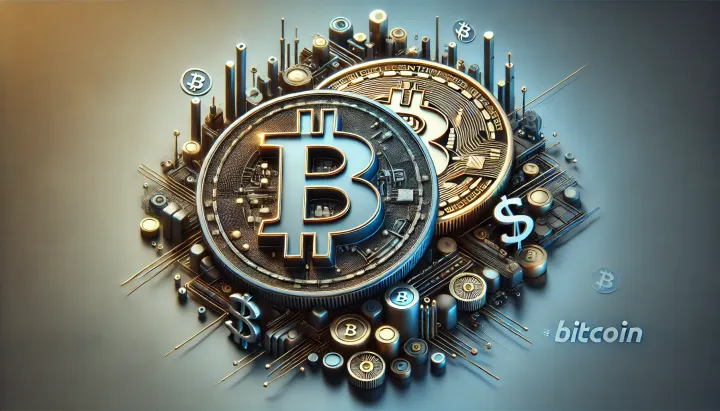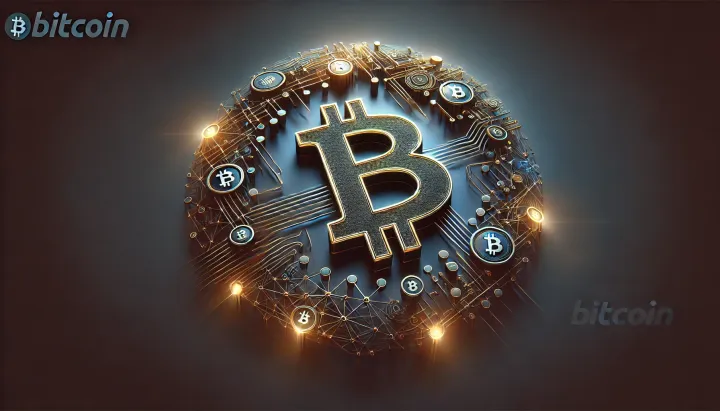Bitcoin’s Fixed Supply and Security: Implications for Institutional Finance
The September 26, 2024 episode of The Bitcoin Layer centers on Nik Bhatia’s efforts to explain the intricacies of Bitcoin to economist Michael Howell. They discuss Bitcoin's unique supply cap of 21 million coins and its significance in the broader financial landscape.

Briefing Notes
My 'briefing notes' summarize the content of podcast episodes; they do not reflect my own views. If you have comments about this briefing note, please leave a comment below (requires signing up for a free blog subscription). Note that some of the podcast episodes I summarize may be sponsored: don't trust, verify, if the information you are looking for is to be used for decision-making.
Summary
In the September 26, 2024 episode of The Bitcoin Layer, the third of the series on teaching Bitcoin, Nik Bhatia and Michael Howell discuss the technical and financial foundations of Bitcoin’s fixed supply, focusing on its cryptographic security and decentralized validation process. The episode highlights key opportunities and risks, including Bitcoin's potential as pristine collateral, the impact of ETFs on adoption, and the challenges of maintaining network security in a world with increasing financialization.
Take-Home Messages
- Bitcoin’s fixed supply drives its long-term value: The 21 million coin cap is central to Bitcoin’s appeal as a hedge against inflation and a secure digital asset.
- Decentralization secures Bitcoin’s network: Bitcoin’s decentralized proof-of-work system ensures its immutability and resistance to manipulation.
- Financialization through ETFs presents both risks and opportunities: ETFs can increase institutional adoption but pose risks such as market manipulation and volatility.
- Bitcoin as pristine collateral: Bitcoin’s verifiable scarcity and decentralized nature make it a superior alternative to traditional assets like gold and U.S. Treasuries.
- State-sponsored forks are a potential threat: While a malicious state actor could attempt to fork Bitcoin, the decentralized global network would reject such efforts, limiting their impact.
Overview
This episode of The Bitcoin Layer, the third in the series that has host Nik Bhatia taking economist Michael Howell through the fundamentals of Bitcoin, explores the mechanics behind Bitcoin’s fixed supply of 21 million coins and the cryptographic systems that protect it from tampering. The podcast highlights the importance of Bitcoin’s decentralized validation process, which uses a proof-of-work system to secure the network. This system not only prevents unauthorized changes to Bitcoin’s supply rules but also ensures the network’s resistance to attacks, such as the 51% attack.
The discussion moves into the realm of institutional finance, focusing on Bitcoin’s potential as pristine collateral. Howell emphasizes the advantages of Bitcoin over traditional assets like gold and U.S. Treasuries, noting its transparency and verifiable scarcity. As financial products like ETFs continue to integrate Bitcoin, both recognize the opportunities for institutional adoption, as well as the risks associated with market manipulation through short selling and other financialization tools.
A key part of the conversation examines potential threats to Bitcoin’s security, including hypothetical state-sponsored forks. While such a scenario could create temporary confusion in the market, Bhatia and Howell conclude that Bitcoin’s decentralized structure would ultimately reject any alternative networks, preserving the integrity of the original Bitcoin blockchain.
Stakeholder Perspectives
- Institutional Investors: Bitcoin’s scarcity and secure supply make it an attractive asset, but concerns about ETF-driven market manipulation and volatility must be addressed.
- Policymakers: Ensuring the resilience of Bitcoin’s decentralized network against attacks, such as 51% attacks or malicious forks, is crucial for maintaining confidence in the asset.
- Bitcoin Miners: As Bitcoin's mining rewards decrease with halving events, miners need to adapt their business models to remain profitable in the long term.
- Custodians: Secure custodianship of Bitcoin, particularly in ETFs, is a growing concern for institutional investors, requiring high standards of counterparty risk management.
Implications
The discussion underscores the importance of Bitcoin’s fixed supply and decentralized network for its role in global finance. As Bitcoin becomes more integrated into financial products like ETFs, institutional investors will need to manage the risks of market manipulation while capitalizing on Bitcoin’s potential as pristine collateral. The future of Bitcoin’s adoption will also depend on maintaining the security of its decentralized network, particularly against threats like state-sponsored forks or attempts to alter its consensus rules.
For policymakers, safeguarding Bitcoin’s decentralized structure against attacks like 51% attacks or state-level disruptions is essential for ensuring the asset’s stability. Meanwhile, institutional investors and custodians must address counterparty risks as they manage Bitcoin assets in large-scale products like ETFs.
Future Outlook
Bitcoin’s increasing financialization will continue to drive institutional interest, particularly as its potential as pristine collateral becomes more recognized. However, this financialization brings new risks, including the potential for market volatility and manipulation through ETFs and other products. As Bitcoin’s mining rewards decrease with each halving, maintaining the security and decentralization of the network will be crucial for preserving its value and role in global finance.
Bitcoin's role as a global financial asset will likely expand, but it will face challenges from both technological and regulatory perspectives. Ensuring the integrity of the network while promoting its adoption in institutional portfolios will require balancing the opportunities of financial innovation with the need for robust security measures.
Information Gaps
- How can Bitcoin mining continue to decentralize globally to reduce the risk of a 51% attack in the future? Understanding the future of Bitcoin’s decentralization is essential for maintaining network security. As mining centralizes in specific regions, the risk of a 51% attack could increase. Research into decentralization strategies will help identify new ways to distribute mining power and protect the network.
- How could a state-sponsored fork of Bitcoin affect the trust and liquidity of the original Bitcoin network in global markets? A state-sponsored fork represents a potential geopolitical risk to Bitcoin’s trust and liquidity. Investigating how the global market might respond to such a scenario will help stakeholders anticipate the economic impacts and formulate contingency plans to preserve Bitcoin's integrity.
- What regulatory measures can be put in place to prevent the abuse of financial tools, such as short selling, that could destabilize the Bitcoin market? Financialization introduces the risk of market manipulation, particularly through short selling in ETFs. Exploring effective regulatory frameworks will be crucial to ensuring that Bitcoin’s market remains stable and that financial products do not introduce excessive volatility or risk.
- How can Bitcoin’s use as pristine collateral in institutional portfolios be expanded while addressing concerns around price volatility and regulatory uncertainty? Bitcoin’s role as pristine collateral has the potential to reshape global finance. Understanding how to manage its price volatility and navigating the regulatory landscape will be key to ensuring its broader adoption in institutional portfolios.
- How might regional centralization of Bitcoin nodes impact the integrity of the global decentralized supply validation process? Regional concentration of Bitcoin nodes could compromise the network’s decentralized validation process. Further research is needed to assess how centralization trends might affect Bitcoin’s security and to identify strategies for maintaining the integrity of its global node network.
Broader Implications
Bitcoin as Pristine Collateral
As Bitcoin continues to evolve, its role as pristine collateral in the global financial system will likely expand. With rising sovereign debt and growing distrust in traditional assets like U.S. Treasuries, Bitcoin’s verifiable scarcity and transparency position it as a superior alternative. This could drive increased institutional adoption, reshaping how collateral is used in financial transactions globally.
Regulatory Challenges and Financialization
The financialization of Bitcoin through ETFs and similar products introduces both opportunities and risks. While ETFs offer a path for greater institutional adoption, they also expose Bitcoin to market manipulation, particularly through short selling. Effective regulatory frameworks will be necessary to protect against these risks, ensuring that financial products based on Bitcoin do not destabilize its price or undermine investor confidence.
Global Security and Decentralization
The security of Bitcoin’s decentralized network remains a core strength, but it faces ongoing challenges, especially with regional mining centralization and potential state-sponsored attacks. The hypothetical scenario of a state actor creating a fork of Bitcoin, as discussed in the podcast, raises questions about how the global community would respond. Safeguarding the integrity of Bitcoin’s decentralized consensus and validating processes will be essential to maintain its long-term security and global trust.
Institutional Adoption and Market Dynamics
Bitcoin’s future as an institutional asset is closely tied to its ability to maintain market stability while supporting large-scale financial products like ETFs. As more institutional investors enter the market, the demand for liquidity and secure custodianship will grow. However, increased participation could lead to short-term volatility as financial institutions adjust to Bitcoin’s unique market dynamics. Over time, this may stabilize as regulatory standards improve and Bitcoin becomes more integrated into traditional finance.
Mining Economics and Network Health
Future Bitcoin reward halvings will place further pressure on miners, forcing them to adapt their business models. While this process sustains Bitcoin’s scarcity, it could also lead to further centralization of mining power in regions with lower energy costs. Maintaining a healthy and geographically distributed mining ecosystem will be critical for ensuring that Bitcoin’s decentralized security model remains intact as mining rewards continue to decrease.



Comments ()